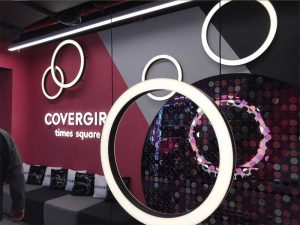
Lightboxes can solve two problems—highlighting key brand and product messaging and enhancing (or augmenting) ambient store lighting.
“Early indications suggest the changes in consumer behaviour during the COVID-19 crisis will largely mirror the changes that manifested themselves during the 2008 recession—but with some unique nuances. We’ve observed, for instance, the familiar flight to value: our recent research shows that 34 per cent of consumers have increased their spending on private-label products during the pandemic and that most of those consumers plan to continue doing so even after the crisis has passed. When asked why they started buying more private-label goods, 44 per cent cited affordability and better value.”
Spin the affordability and better value to retailers themselves as they reinvent their presence in-store, and lightboxes are sure to be the way to creating value all around and keeping price points at bay as consumers become more frugal. Because they can be used to highlight the architecture of any retail space, they are now part of the planning and design conversation with new builds.
Light at the end of the tunnel
The post-COVID-19 world adds more to the customer-centric, customer-first thinking in retail. If needs, wants, and wishes are not met and recognized, any resemblance of customer loyalty has no chance of survival. Consumers will come back; the question remains, however, will they return repeatedly and become evangelists for brands? This will be key to any retail success.
That said, lighting done correctly and effectively can drive retail sales. Retailers can effectively guide consumer traffic in-store to where they want to see people spend more time based on product sets. The level of brightness coupled with the right colours can greatly enhance the warm, ‘comfortable’ areas of the store where high-margin products are displayed.
“Lightboxes allow us to use evocative imagery and branded patterns to support our immersive retail experiences,” says Beverley Wells, vice-president, Branded Environment–Skikatani Lacroix Design. “Specifically, continued advancement in LED technology means we can really use scale to our design advantage.”
The lightbox installed in the underground PATH in Toronto, which is one of the largest fabric backlit lightbox installations in North America, is a good example of this. It is a massive 66 m (217 ft) of visual brilliance fulfilling dual objectives of illuminating the entire space and working as an incredibly effective messaging medium and advertising option.
Mark Mantha, president of Man-Mac Consulting Inc., provides market development consulting for Omnify Lighting, a manufacturer of backlighting products and supporting accessories that are designed and built to co-ordinate and provide a unified lighting solution. He can be reached via email at mark@manmacconsulting.ca.
Bill Horst is the vice-president marketing for Omnify Lighting. He holds a bachelor of arts in graphic communications management from Ryerson University and has more than 15 years of experience in marketing leadership. He leads all branding, communications, and advertising for Omnify Lighting. He can be reached via email at bill@omnifylighting.com.





